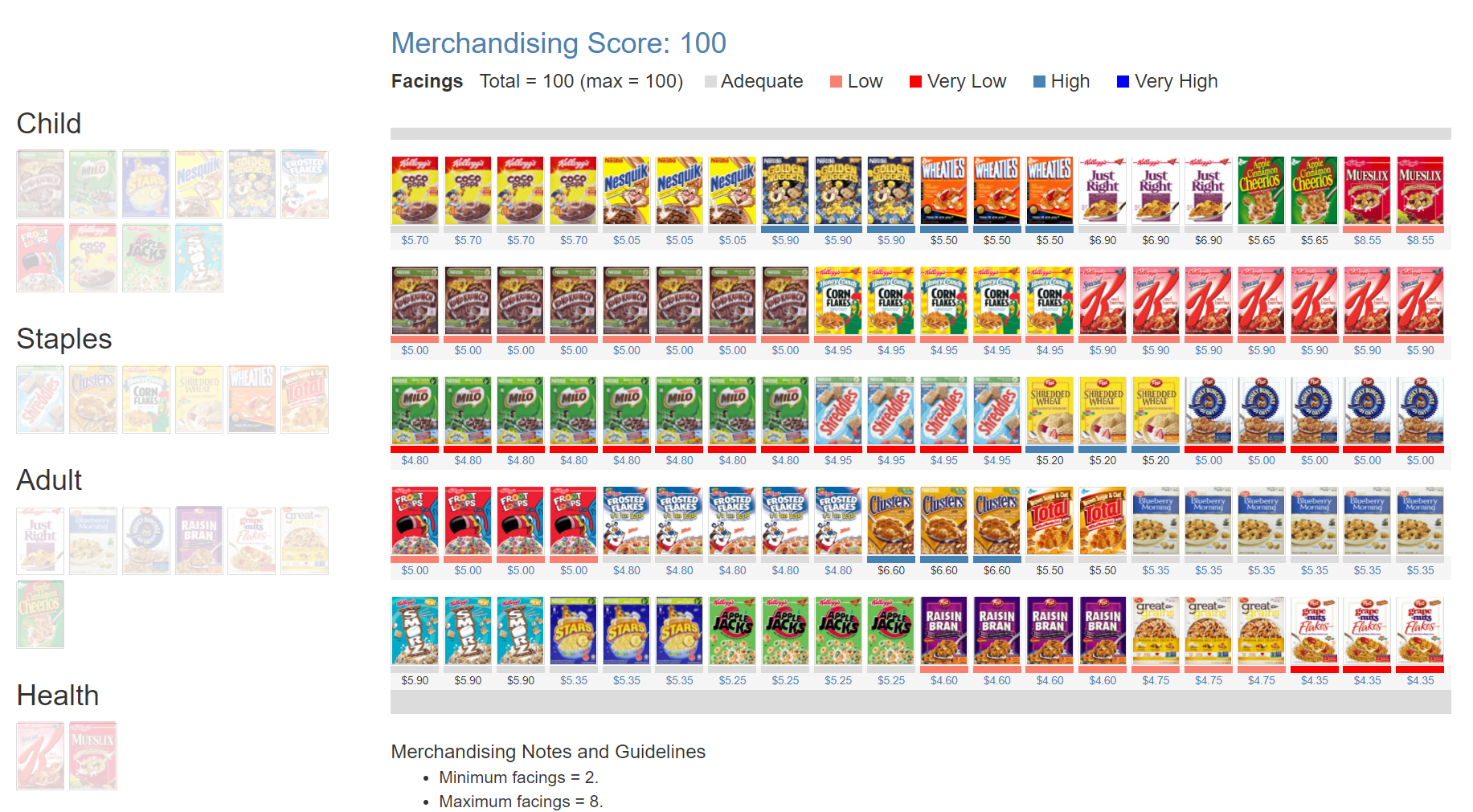-
Category Management
Category Management
Partnership between Retailers and Manufacturers
Category Managers and Trade Marketers
Trade Marketing
Origins of Category Management
Trade Formats
Categories
Category Roles
Category Strategies
Review
Retail Mix
Price
Promotions and In-Store Media
Space Management
Execution
Benefits of Category Management
Developments in Retailing
- Retail Tracking
- Sales and Distribution
- Retail Analytics
- Category Management
- Marketing Education
- Is Marketing Education Fluffy and Weak?
- How to Choose the Right Marketing Simulator
- Self-Learners: Experiential Learning to Adapt to the New Age of Marketing
- Negotiation Skills Training for Retailers, Marketers, Trade Marketers and Category Managers
- Simulators becoming essential Training Platforms
- What they SHOULD TEACH at Business Schools
- Experiential Learning through Marketing Simulators
-
MarketingMind
Category Management
Category Management
Partnership between Retailers and Manufacturers
Category Managers and Trade Marketers
Trade Marketing
Origins of Category Management
Trade Formats
Categories
Category Roles
Category Strategies
Review
Retail Mix
Price
Promotions and In-Store Media
Space Management
Execution
Benefits of Category Management
Developments in Retailing
- Retail Tracking
- Sales and Distribution
- Retail Analytics
- Category Management
- Marketing Education
- Is Marketing Education Fluffy and Weak?
- How to Choose the Right Marketing Simulator
- Self-Learners: Experiential Learning to Adapt to the New Age of Marketing
- Negotiation Skills Training for Retailers, Marketers, Trade Marketers and Category Managers
- Simulators becoming essential Training Platforms
- What they SHOULD TEACH at Business Schools
- Experiential Learning through Marketing Simulators
Trade Formats — FMCG
The FMCG retail environment is continually evolving. At the broadest level, it may be split into the upper or modern trade, and the lower trade, which comprises a collection of traditional, independent stores such as mom and pop stores, provision stores and sundry kiosks.
Globally, the channels and sub-channels that are most prevalent in the upper trade are as follows:
- Supermarket is a self-service store offering a wide variety of food and household products. Store layout is organized into aisles with fixtures of shelves used to display merchandise. The average supermarket has roughly 15,000 to 25,000 items (SKUs) in stock spread over 1,000 to 4,000 sq. metres.
- Hypermarket/supercentre is a large retail facility combining a supermarket and a department store. In theory, hypermarkets allow customers to satisfy their routine shopping needs in one trip. They offer a wide range of products, including food and household products as well as general merchandise. On average a hypermarket covers a floor space of 10,000 to 20,000 sq. metres, and stocks roughly 50,000 to 100,000 items.
- Minimarket/superette is a small supermarket. Usually, these stores have one or two check-out counters.
- Hard discounter is characterized by very low prices, small assortment size (500 to 1,500 items) comprising primarily private labels, in relatively small stores (300 to 1,000 sq. metres). Hard discounters like Aldi and Lidl originated in Europe and have expanded their operations to various countries including the United States, China, Australia, and South Africa.
- Soft discounter primarily sells limited range of food and household products at low prices. These stores stock roughly 1,500 to 3,000 items, and their floor space varies from 300 to 3,000 sq. metres.
- Health and personal care store retails health and personal care products. Examples include Boots (UK), Watsons (Asia) and Walgreens (US).
- Convenience store is a shop with extended opening hours, stocking a limited range of food and household goods. It stocks about 500 to 1,500 items and is usually less than 300 sq. metres in size. Examples include 7-Eleven, Circle K and Lawson.
- Warehouse store/warehouse club is a retail facility, such as Costco and Sam’s Club in the U.S., which offers food, household products and some general merchandise in bulk, at discounted prices. It offers a no-frills experience. The warehouse shelving is heavily stocked with merchandise intended to move at a fast pace. On average it stocks about 4,000 items. Unlike a warehouse club, a warehouse store does not require membership or membership fees.
In addition to these retail channels, there are also a number of on-premise channels such as coffee shops, drink stalls, hawker centres, bars/night clubs and dining.
Diversity is particularly pronounced in Asia, which has evolved rapidly in the past 20 years. The continent is a melting pot of formats, from the traditional Sari Sari stores in the Philippines and Chinese medical halls in North Asian and Southeast Asian markets, to hypermarkets, sophisticated vending machines (especially in Japan), and the arrival of virtual shopping platforms, spearheaded by countries such as South Korea.
Previous Next
Use the Search Bar to find content on MarketingMind.
Online Apps to train Category Managers

The Plannogrammer is an experiential learning facility for category managers, trade marketers, and retailers in consumer markets. Ideally suited for hybrid learning programmes, Plannogrammer imparts hands-on training in the planning and evaluation of promotions and merchandising.
It supports a collection of simulation and analysis platforms such as Promotions and Space Planner for optimizing space and promotions, Plannogram for populating shelves and merchandising, a Due To Analysis dashboard that decomposes brand sales into the factors driving sales, and a Promotion Evaluator to evaluate the volume, value and profit impact of promotion plans.
Contact | Privacy Statement | Disclaimer: Opinions and views expressed on www.ashokcharan.com are the author’s personal views, and do not represent the official views of the National University of Singapore (NUS) or the NUS Business School | © Copyright 2013-2025 www.ashokcharan.com. All Rights Reserved.





